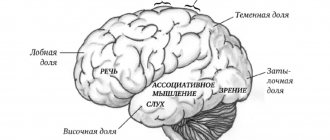Getting to know one person about another is always accompanied by an emotional assessment of the partner, an attempt to understand his actions, forecasting changes in his behavior and modeling his own behavior. Since at least two people participate in this process and each of them is an active subject, in building an interaction strategy, each must take into account not only the motives and needs of the other, but also his understanding of the partner’s motives and needs. The process of interpersonal perception is also called social perception.
The mechanism of interpersonal perception is the way in which a person interprets and evaluates another. There can be quite a lot of such methods. Today we will look at the basic mechanisms of interpersonal perception: identification, empathy, egocentrism, attraction, reflection, stereotype and causal attribution.
Identification
The first and main mechanism of interpersonal perception is the identification of a person by a person. From the point of view of social psychology, it confirms the fact that the simplest way to understand a partner is to liken yourself to him.
In general, identification has several interpretations:
- Identification of oneself with another individual based on an emotional connection.
- Assimilation of the values, roles and moral qualities of another person.
- Copying another person's thoughts, feelings or actions.
The most comprehensive definition of identification is as follows. Identification is an understanding of a partner through his conscious or unconscious identification with himself, an attempt to feel his state, mood and attitude to the world, putting himself in his place.
What is perception
The perspective side of communication or perception in psychology is the process of interaction between people. Based on ordinary communication, understanding and perception of man by man. The term "perception" comes from the Latin perceptio, meaning "perception".
There is another definition of the concept. Perception in psychology is an individual’s reflection at the cognitive level of the objects and phenomena he encounters.
In short, perception means the perception of one person by another, their awareness of each other’s personal qualities. This happens through understanding attitudes, goals, and motives. You are making an objective assessment of your interlocutor, whose qualities are not similar to yours.
Perception manifests itself not only in understanding, but also in acceptance. It turns out that two people share values and beliefs and coordinate them with each other. As a result, friendship, affection, and love develop.
Perception helps to “read” the people around you, to see what they do not say about themselves. If the analysis is performed inaccurately, a conflict situation occurs.
Empathy
The second mechanism of interpersonal perception is closely related to the first. Empathy is the emotional desire to respond to the problems tormenting another person, to sympathize with him and empathize.
Empathy is also interpreted as:
- Comprehension of the states of another individual.
- A mental process aimed at identifying the experiences of others.
- An action that helps an individual build communication in a special way.
- The ability to penetrate the mental state of another person.
The ability for empathy increases when the interlocutors are similar, as well as when the individual gains life experience. The higher the empathy, the more colorful a person imagines the impact of the same event on the lives of different people, and the more aware he is of the fact that there are different views on life.
An individual prone to empathy can be recognized by the following characteristics:
- Tolerance for other people's emotions.
- The ability to delve into the inner world of your interlocutor without revealing your worldview.
- Adapting your worldview to the worldview of another person in order to achieve mutual understanding.
Communication means
In communication there are verbal and non-verbal means
communication.
Verbal means are speech (verbal) means of communication. Non-verbal – postures, gestures, facial expressions.
— What role do you think these and other means of communication play?
According to A. Meirabian, in the process of communication, only 7% of information is transmitted through verbal means of communication (words), 38% of information is transmitted through intonation, voice timbre, and 55% of information is transmitted through non-verbal means (gestures, facial expressions, pantomimes).
7 pages, 3483 words
Question 11 The communicative side of communication. Structure and levels of communicative acts
... occur not so much at the conscious level as at the unconscious level. Note that the communicative side of communication may include ... with the eyes, looking away to the side. Gestures of defense or conflict - crossing arms, clenching fingers into a fist. Especially... love advances, flirting). A facial expression can say a lot. A smile indicates friendliness and a positive attitude. Tight lips...
Learning to understand the language of nonverbal communication is very important.
- Why do you think?
Any of the nonverbal components of communication can help verify the truth of what is said in words and understand what people really think.
However, for the correct interpretation of nonverbal communication, experts recommend following the following rules:
— one should “read” not individual gestures (they, like some words, can have several meanings), but their totality;
- gestures should be interpreted in the context of their manifestations (“arms crossed on the chest”; when communicating, this gesture expresses distrust, closedness; in cold weather a person is simply frozen);
- it is necessary to take into account national characteristics (for example, according to an English psychologist, during an hour-long conversation, a Finn resorts to gestures once, an Italian - 80 times, a Frenchman - 120 times, a Mexican - 180 times)
- when “reading” gestures, you should not attribute your experience and your condition to another person
- So, let's look at some types of nonverbal communication.
The most important means of nonverbal communication is facial expressions
.
Facial expressions are closely related to emotions and allow a person to guess about the feelings of joy, sadness, tension or peace experienced by the interlocutor. Facial expressions help a person convey his mood and attitude towards what he is talking about. Forehead, eyebrows, mouth, eyes, nose, chin - these parts of the face express basic human emotions. This could be: suffering, anger, joy, fear, etc.
Moreover, it is easier to recognize positive emotions. The main cognitive load when recognizing true feelings is borne by the eyebrows and lips (according to other researchers, these are the lips and chin).
Thus, eyebrows shifted towards the bridge of the nose express anger. Raised eyebrows can convey surprise, bewilderment or admiration. Drooping corners of the lips indicate sadness, grief or sadness. Tightly compressed lips indicate resentment.
2 pages, 848 words
human perception as a higher mental cognitive process.
Contents Introduction 3 1. The concept of perception. Properties of perception 5 2. Types of perception 15 3. Illusions of perception 30 Conclusion 34 Literature 35 Introduction Perception is the reflection of objects and phenomena in the totality of their properties and parts with their direct impact on the senses. It includes a person's past experiences in the form of ideas and knowledge. The problem of human perception, its...
— What do these drawings have in common?
A universal means of non-verbal communication is a smile.
– Do you think a nurse needs a smile? Why?
The nurse's face should be friendly and open, expressing sincere sympathy. It is a smile that allows you to establish trusting contact with the patient and helps to cope with the negative emotions that the patient experiences. We will talk more about this in the medical psychology course. A smile relieves the wariness of the first minutes, promotes calm, confident communication and creates a positive attitude. A smile means goodwill, the need for approval. Smiling helps you feel more confident and happier. Psychologists recommend that words of greeting and gratitude be accompanied by a smile. (Americans like to repeat: “smile.” However, it must be remembered that the smile should be appropriate to the situation and should not irritate the interlocutor.)
The first step towards your interlocutor is a glance
. The look is very eloquent and expresses a wide variety of feelings and states. He can be tough, prickly, kind, joyful, open, hostile, wandering, frozen, etc. The gaze expresses the attitude towards the interlocutor. It has been noticed that if a person is trying to hide some information (or is lying), his eyes meet the eyes of his partner less than one third of the time of the conversation. Making eye contact helps regulate conversation. When a person speaks, he usually looks at the interlocutor less often than when he listens to him. Looking to the side or sideways is perceived as an expression of suspicion and doubt. (Statistics have calculated that in the works of L. N. Tolstoy, 85 shades of eye expression and 97 shades of a smile are described.)
Facial expressions can be consciously controlled in order to “hide” information about the psychological state. Therefore, in communication, it is important to know what information can be obtained by observing a person’s body and his movements. The next means of non-verbal communication is gestures
. In a conversation, we often accompany words with actions in which the hands play the main role, and even a simple handshake carries information about the interlocutor. Thus, a handshake hand presented palm down usually means the partner’s superiority, a hand presented palm up signifies agreement to submit, and a hand presented vertically signifies a partner’s handshake. (Every human gesture is like a word in a language; it is inextricably linked with the train of thought and the movement of feelings.)
13 pages, 6384 words
Psychological aspects of perception, memorization and reproduction of information about signs of a person’s appearance
Introduction Significant socio-economic and political transformations in our country that have occurred in recent years have had a significant impact on the dynamics and structure of crime. Despite some stabilization of the criminal situation in the country in terms of the number of crimes committed annually, the situation continues to remain difficult. The nature of crime is changing, the degree of...
The most common types of gestures in communication are:
A) gestures of appreciation
, in which a person evaluates information: scratching the chin, extending the index finger along the cheek, standing up and walking
B) gestures of self-control
: hands are brought behind the back, with one squeezing the other, or when a person sitting on a chair grabs the armrests with their hands
B) gestures of dominance
: Thumb-exposing gestures and sharp downward strokes
D) location gestures
: placing a hand on the chest, indicating honesty, and intermittently touching the interlocutor
Body position is of great importance in the process of communication. Our appearance largely depends on the ability to hold and move. Our manner of standing, walking and sitting is an additional source of information.
For example, when the interlocutor sits slightly leaning forward, he expresses attention and concentration; if he leaned back and crossed his legs, then his appearance “speaks” of disinterest, “switching off” from the conversation.
During communication, you can observe the most “readable” postures:
A) open
, characterizing sincerity and truthfulness: open palms of hands turned towards the interlocutor; legs are not crossed; unbuttoned jacket
B) closed
, or defensive, meaning a reaction to possible threats or conflict situations: crossed arms; sitting astride a chair, with the back of the chair acting as a shield or protection; and also when a person sits on a chair with his legs crossed or crossed
B) readiness pose
, characterizing the desire for active actions: hands lie on the hips; the torso is tilted forward, the hands rest on the knees, and the legs rest on the floor so that one leg protrudes slightly forward, leaving the other behind
Another important factor in communication is interpersonal space
– how close or far the interlocutors are in relation to each other:
There are four spatial zones or distances in communication:
1) intimate area
(from 0 to 45 cm).
This distance corresponds to intimate relationships and is typical for relatives, lovers and friends. This zone is the most important and protected by man;
2) personal zone
(from 45 cm to 120 cm).
This distance is used in everyday communication among familiar people (corresponds to informal social and business relationships);
3) social zone
(from 120 cm to 400 cm) This is the distance of official meetings with strangers whom we do not know very well (corresponds to formal and official relationships);
4) public or public area
(from 400 cm to 750 cm) This is communication with a large number of people, with a group, with an audience (for example, it is more convenient for a lecturer to convey information, and for listeners to perceive).
People generally feel comfortable and make a favorable impression when standing or sitting at a distance appropriate for these types of interactions. An excessively close, as well as an excessively distant position has a negative impact on communication.
How empathy is similar to identification
The empathy mechanism has some similarities with the identification mechanism. In both cases, there is a person's ability to see things from another person's point of view. However, empathy, unlike identification, does not imply identifying oneself with the interlocutor. By identifying with a partner, a person accepts his behavior model and builds a similar one. By showing empathy, an individual simply takes into account the interlocutor’s line of behavior, while continuing to build his own behavior independently of him.
Empathy is considered one of the most important professional skills of a psychologist, doctor, teacher and leader. Empathic attention (listening), according to K. Rogers, is a special attitude towards a partner, based on the synthesis of identification and empathy. Inclusion in another person, allowing one to achieve openness of contact, is an identification function. Such “immersion in the interlocutor” in its pure form has negative consequences - the psychologist “gets involved” with the client’s difficulties and begins to suffer from his problems himself. This is where the empathic component comes to the rescue - the ability to distance oneself from the partner’s state. Thus, the combination of such mechanisms as person-to-person identification and empathy allows the psychologist to provide real assistance to clients.
Communication concept.
From the moment of his birth until the end of his life, a person is in the process of constant communication and interaction with other people. Statisticians in some countries have calculated that up to 70% of the time in the lives of most people is occupied by communication processes. In communication, we convey a variety of information to each other; exchange knowledge, opinions, beliefs; declare our goals and interests; We learn practical skills and abilities, as well as moral principles, rules of etiquette and traditions.
However, communication does not always proceed smoothly and successfully. Often we are faced with critical situations: someone did not understand us; we did not understand someone; We spoke to someone too harshly, rudely, although we did not want this. There is no person who has never experienced difficulties in the process of communication in his life. In private life, we have the right to choose those with whom we enjoy communicating, those who appeal to us. However, in the service we are obliged to communicate with those who are there, including people who are unsympathetic to us. In this situation, it is very important to be able to learn how to establish contact, since the success of professional activity depends on this skill. Numerous studies by psychologists have proven that there is a direct connection between the quality of communication and the effectiveness of any activity, i.e. almost everything depends on the ability to contact people
5 pages, 2482 words
Mechanisms of person’s perception by person and mutual understanding in the process of communication
The perceptual side of communication When studying problems related to the perceptual side of communication, people sometimes talk about social perception. Social perception should be understood as people’s perception, understanding and assessment of social objects (other people, themselves, groups, other social communities). This is a broader concept than the concept of “interpersonal perception”. In the latter case...
— Do you think your future professional activity as a nurse (paramedic) somehow depends on your ability to communicate and achieve mutual understanding?
Even Avicenna, the great physician and thinker of the Middle Ages, spoke about three means of helping a sick person - “the knife, the grass and the word,” thereby emphasizing the importance of the human word, and in fact, the psychology of communication in healing from illness. Any activity is possible only if psychological contact and mutual understanding are established between people. However, we must remember that successful communication is achieved not only by knowledge, techniques and technology. The basis of communication is a sincere, friendly attitude towards a person.
Each of us has an idea of what communication is. Our life is built from it, it lies at the basis of human existence, therefore communication has become the object of socio-psychological analysis. There are many definitions of communication in the literature. We will use the most general concept.
Communication is a complex, multifaceted process of establishing and developing contacts between people, including the exchange of information, the development of a unified interaction strategy, as well as perception, empathy and mutual understanding of each other.
Communication is of great importance in the formation of the human psyche, in the development and establishment of reasonable cultural behavior. Through communication, a person acquires higher cognitive abilities and qualities; through communication, a person turns into a personality (examples - Mowgli children)
Communication is always a two-way process in which all its participants are involved, leading to the mutual connection of people with each other.
The study of the communication process has shown how complex and diverse this phenomenon is. Communication is carried out in the unity of its three functions:
1) Communication function -
manifests itself in the mutual exchange of information between partners in communication, transmission and reception of knowledge, opinions, feelings;
2) Interactive feature -
is to organize interpersonal communication. When participants in communication exchange not only knowledge, ideas, but also actions, experiences, deeds;
7 pages, 3014 words
Forms of communication between people, expression of feelings and emotions, manifestation of friendship and love
... is the main determining factor in communication between people, representing a set of certain codes formed by the cultural baggage of a given level, facilitating or complicating communication, but always determining ...
3) Perceptual function -
manifests itself through people’s perception, understanding and evaluation of each other.
To better understand what communication is, we need to consider in detail its types, levels, features and obstacles.
Types of empathy
Empathic experiences can be adequate and inadequate. For example, someone else’s grief causes sadness for one, and joy for another.
In addition, empathy can be:
- Emotional. It is based on the mechanism of projection and imitation of the effective and motor reactions of the interlocutor.
- Cognitive. Based on intellectual processes.
- Predicative. Expresses a person’s ability to predict the reactions of an interlocutor in a given situation.
An important form of empathy is empathy – the experience by one individual of feelings, emotions and states experienced by another. This happens through identification with the interlocutor and sympathy for him.
Egocentrism
The third mechanism of interpersonal perception, unlike the previous two, complicates the knowledge of each other by individuals, and does not facilitate it. Egocentrism is a person’s concentration on his personal experiences and interests, which leads to the fact that he loses the ability to understand people with a different worldview.
Egocentrism happens:
- Cognitive. Manifests itself in the process of thinking and perception.
- Moral. Illustrates a person’s inability to understand the reasons for the behavior of others.
- Communicative. Expresses disrespect for the semantic concepts of the interlocutor.
Methods of influence in the process of communication
Communication includes certain ways in which individuals influence each other; the main ones are infection, suggestion, imitation.
Contagion is an unconscious, involuntary exposure of an individual to certain mental states. Infection acts as a form of spontaneously manifesting internal mechanism of human behavior. The mechanism of socio-psychological infection comes down to the effect of multiple mutual reinforcement of the emotional effects of people communicating with each other.
A special situation in which the impact through infection is enhanced is a situation of panic. Panic arises among a lot of people as a certain emotional state. The immediate cause of panic is the appearance of any news that can cause a kind of shock.
Suggestion is the purposeful, unreasoned influence of one person on another or on a group. With suggestion, an influence is exerted on another, based on the uncritical perception of a message or information. Unlike infection, which is, as a rule, non-verbal in nature (dancing, games, music, emotions, etc.), suggestion, on the contrary, is verbal in nature, that is, carried out through a speech message. Suggestion acts with particular force on impressionable people who, at the same time, do not have a sufficiently developed ability for independent logical thinking, do not have firm life principles and beliefs, and are unsure of themselves. Imitation as a method of influence is manifested in following an example or model through its reproduction. Imitation is of particular importance in the process of human mental development.
Reflection
When considering the psychological mechanisms of interpersonal perception, one cannot fail to mention reflection. Reflection is a person’s awareness of how he is evaluated and perceived by other individuals. That is, this is a person’s idea of what his interlocutor thinks of him. This element of social cognition, on the one hand, means a person’s knowledge of his interlocutor through what he thinks about him, and on the other hand, knowledge of himself through this. Thus, the wider an individual's social circle, the more ideas about how others perceive him, and the more a person knows about himself and others.
Stereotype
This is a very important and quite capacious mechanism of interpersonal perception. A stereotype in the context of interpersonal attraction is the process of forming an opinion about a person based on personal prejudices (stereotypes).
In 1922, to denote ideas associated with inaccuracy and lies, V. Limpan introduced the term “social stereotype.” As a rule, the formation of stable patterns of any social object occurs unnoticed even by the individual himself.
There is an opinion that it is precisely because of poor meaningfulness that stereotypes are firmly entrenched in the form of stable standards and gain power over people. A stereotype arises in conditions of lack of information or is the fruit of a generalization of an individual’s own experience. The experience is often supplemented by information obtained from cinema, literature and other sources.
Thanks to a stereotype, a person can quickly and, as a rule, reliably, simplify the social environment, organize it into certain standards and categories, make it more understandable and predictable. The cognitive basis of stereotyping is formed by processes such as limitation, selection, and categorization of a large flow of social information. As for the motivational basis of this mechanism, it is formed by processes of evaluative popularization in favor of one or another group, which give a person a sense of belonging and security.
Stereotype functions:
- Selection of information.
- Formation and support of a positive self-image.
- Creation and support of a group ideology that justifies and explains the behavior of the group.
- Formation and support of a positive image of “We”.
Thus, stereotypes are regulators of social relations. Their main features are: economy of thinking, justification of one’s own behavior, satisfaction of aggressive tendencies, stability and release of group tension.
Classification of stereotypes
There are several existing classifications of stereotypes. According to V. Panferov’s classification, stereotypes are: social, anthropological, and ethnonational.
Let us dwell in more detail on A. Rean’s classification, according to which there are stereotypes:
- Anthropological. They appear in the case when the assessment of a person’s psychological qualities and his personality depends on the characteristics of his appearance, that is, anthropological characteristics.
- Ethnonational. They are relevant when a person’s psychological assessment is influenced by his belonging to a particular ethnic group, race or nation.
- Social status. They take place if the assessment of an individual’s personal qualities occurs depending on his social status.
- Social-role. In this case, personality assessment is subordinated to the social role and role functions of the individual.
- Expressive and aesthetic. Psychological assessment of personality is mediated by a person’s external attractiveness.
- Verbal-behavioural. The criterion for assessing a personality is its external features: facial expressions, pantomime, language, etc.
There are other classifications. In them, in addition to the previous ones, the following stereotypes are considered: professional (a generalized image of a representative of a particular profession), physiognomic (appearance traits are associated with personality), ethnic and others.
National stereotypes are considered the most studied. They illustrate people's attitudes towards certain ethnic groups. Such stereotypes often serve as part of a nation's mentality and identity, and also have a clear connection with national character.
Stereotyping, which arises in conditions of lack of information, as a mechanism of interpersonal perception, can play a conservative and even reactionary role, forming in people an incorrect idea of others and deforming the processes of interpersonal interaction and mutual understanding. Therefore, it is necessary to determine the truth or fallacy of social stereotypes purely on the basis of an analysis of specific situations.
Errors
There are many common perceptual errors that have a major impact on impression formation.
most common ones include:
- we fall under the influence of evidence,
- we are influenced by first impressions,
- we perceive the interlocutor through comparison with ourselves and look for similarities,
- we place more emphasis on negative character traits than on positive ones,
- when our interests suffer, we tend to blame people rather than circumstances.
Under the influence of certain effects, false ideas about the interlocutor are formed.
Errors of perception can be an incorrect interpretation of the reasons, motives and incentives of the interlocutor. It may also be a misunderstanding of the meaning of the words he said and the actions he performed.
If the interlocutor put a certain essence into his statement, and the one to whom this statement was intended could not understand this essence, we can talk about a perception error.
In some cases, perceptual errors are not directly tied to the interaction.
For example, based on appearance or stereotypes existing in society, a person may attribute qualities to a person that he does not possess. A person can also ignore some of the interlocutor’s qualities (both good and bad).
Causal attribution
When considering the mechanisms of social perception, one should not ignore such a fascinating phenomenon as causal attribution. Without knowing or insufficiently understanding the true motives of another individual’s behavior, people, finding themselves in conditions of information deficiency, may attribute unreliable reasons for their behavior to him. In social psychology, this phenomenon is called “causal attribution.”
By looking at how people interpret the behavior of others, scientists have discovered something called the fundamental attribution error. It occurs because people overestimate the importance of others' personality traits and underestimate the impact of the situation. Other researchers have discovered the phenomenon of “egocentric attribution.” It is based on the tendency of people to attribute success to themselves and failure to other people.
G. Kelly identified three types of attribution:
- Personal. The reason is attributed to the one who performed the action.
- Objective. A cause is attributed to the object upon which the action is directed.
- Attribution related to circumstances. The cause of what happens is attributed to circumstances.
The observer usually resorts to personal attribution, and the participant, as a rule, attributes everything to circumstances. This feature is clearly visible in the attribution of success and failure.
An important issue in considering causal attribution is the question of the attitude that accompanies the process of perceiving a person by a person, especially in the formation of an impression of an unknown person. This was revealed by A. Bodylev through experiments in which different groups of people were shown a photo of the same person, accompanied by characteristics such as “writer”, “hero”, “criminal” and so on. When the installation was triggered, the verbal portraits of the same person were different. It was revealed that there are people who do not lend themselves to stereotypical perception. They are called selectively stereotypical. Having examined the mechanisms of social perception, let us now briefly talk about its effects.
Mechanisms of interpersonal perception
Home Favorites Random article Educational New additions Feedback FAQ⇐ PreviousPage 4 of 11Next ⇒
The concept of “social perception” is integrative. The mechanisms of social perception include a number of phenomena: from knowing oneself in the process of communication, trying to understand the state, mood of the interlocutor, putting oneself in his place to forming an impression of the perceived person based on developed stereotypes, attributing reasons and motives to his behavior, as well as developing one’s own behavior strategies.
The study of perception shows that it is possible to identify a number of universal psychological mechanisms that ensure the very process of perception and evaluation of another person and allow the transition from externally perceived to assessment, attitude and forecast.
Since a person always enters into communication as a person, he is perceived by another person - a communication partner - also as a person. Based on the external side of behavior, we seem to “read” another person, decipher the meaning of his external data [19].
The impressions that arise in this case play an important regulatory role in the communication process. Firstly, because by cognizing another, the cognizing individual himself is formed. Secondly, because the success of organizing coordinated actions with him depends on the degree of accuracy of “reading” another person.
The idea of another person is closely related to the level of one’s own self-awareness. This connection is twofold: on the one hand, the wealth of ideas about oneself determines the richness of ideas about another person, on the other hand, the more fully the other person is revealed (in more and deeper characteristics), the more complete the idea of oneself becomes . “Personality becomes for itself what it is in itself, through what it is for others” [21].
A similar idea was expressed by Mead, who introduced the image of the “generalized other” into his analysis of interaction.
If we apply this reasoning to a specific situation of communication, then we can say that the idea of oneself through the idea of another is necessarily formed provided that this “other” is not given in the abstract, but within the framework of a fairly broad social activity that includes interaction with him. An individual “correlates” himself with another not in general, but primarily by refracting this correlation in the development of joint decisions. In the course of knowing another person, several processes are simultaneously carried out: an emotional assessment of this other, and an attempt to understand the structure of his actions, and a strategy for changing his behavior based on this, and building a strategy for one’s own behavior.
However, at least two people are involved in these processes, and each of them is an active subject. Consequently, comparison of oneself with another is carried out, as it were, from two sides: each of the partners likens itself to the other [27].
This means that when building an interaction strategy, everyone has to take into account not only the needs, motives, and attitudes of the other, but also how this other understands our needs, motives, and attitudes. All this leads to the fact that the analysis of awareness of oneself through another includes two sides: identification and reflection.
Descriptively, empathy is also defined as a special way of understanding another person. Empathy is usually understood as understanding the emotional states of another person in the form of empathy, penetration into his subjective world. One or another level of empathy is a professionally necessary quality for all specialists whose work is directly related to people.
The term “empathy” first appeared in the English dictionary in 1912 and was close to the concept of “sympathy.” The term was first used by Lipps in 1885 in connection with the psychological theory of the effects of art. One of the earliest definitions of empathy can be found in the work of S. Freud “Wit and its relation to the unconscious”: “We take into account the mental state of the patient, put ourselves in this state and try to understand it by comparing it with our own” [3].
There is a wide range of expressions of empathy. At one extreme is the position of complete immersion in the world of feelings of the communication partner. This means not just knowledge of a person’s emotional state, but specifically the experience of his feelings, empathy. This kind of empathy is called affective or emotional. The other pole is the position of a more abstract, objective understanding of the experiences of a communication partner without significant emotional involvement in them. In this regard, the following levels of empathy are distinguished: empathy (when a person experiences emotions completely identical to those observed), sympathy (an emotional response, an urge to help another), sympathy (a warm, friendly attitude towards other people).
The mechanism of empathy includes the ability to put oneself in the place of another, to look at things from their point of view, but this does not necessarily mean identification with this other person. With empathy, the partner’s line of behavior is taken into account, the subject treats him with sympathy, but interpersonal relationships with him are built based on the strategy of his line of behavior [8].
Only here we do not mean a rational understanding of the problems of another person, but rather the desire to respond emotionally to his problems. Empathy is opposed to understanding in the strict sense of the word; the term is used in this case only metaphorically: empathy is affective “understanding.” Its emotional nature is manifested precisely in the fact that the situation of another person, a communication partner, is not so much “thought through” as “felt.”
Empathic understanding is not the result of intellectual effort. Many experts consider empathy to be an innate property that is genetically determined. An individual's life experiences can only strengthen or weaken it. Empathy depends on the accessibility and richness of life experience, the accuracy of perception, and the ability to tune in while listening to the interlocutor, on the same emotional wavelength as him.
Various training methods help to increase empathic abilities (subject to their innate presence), develop the ability to more effectively use empathy in personal and professional communication.
The process of understanding each other is complicated by the phenomenon of reflection. In contrast to the philosophical use of the term, in social psychology reflection is understood as the awareness by the acting individual of how he is perceived by his communication partner. This is no longer just knowledge or understanding of the other, but knowledge of how the other understands me, a kind of double process of mirror reflections of each other, “deep, consistent mutual reflection, the content of which is the reproduction of the inner world of the interaction partner, and in this inner world, in turn, reflects the inner world of the first researcher.” [23]
People, getting to know each other, are not limited to obtaining information through observation. They strive to find out the reasons for the behavior of communication partners and clarify their personal qualities. But since information about a person obtained as a result of observation is most often insufficient for reliable conclusions, the observer begins to attribute probabilistic causes of behavior and characterological personality traits to the communication partner. This causal interpretation of the behavior of the observed individual can significantly influence the observer himself.
Thus, causal attribution is understood as the subject’s interpretation of the interpersonal perception of the reasons and motives of other people’s behavior, obtained on the basis of direct observation, analysis of performance results, and other things by attributing to an individual, a group of people properties, characteristics that did not fall into the field of perception and are, as it were, conjectured by him .
In conditions of a lack of information, they begin to attribute to each other both the reasons for behavior and sometimes the patterns of behavior themselves or some more general characteristics. Attribution is carried out either on the basis of the similarity of the behavior of the perceived person with some other model that existed in the past experience of the subject of perception, or on the basis of an analysis of one’s own motives assumed in a similar situation. But, one way or another, a whole system of methods for such attribution (attribution) arises. Thus, the interpretation of one’s own and others’ behavior through attribution (reasons, motives, feelings, etc.) is an integral part of interpersonal perception and cognition.
The measure and degree of attribution in the process of interpersonal perception depends on two indicators, namely on the degree:
. uniqueness or typicality of an act (this refers to the fact that typical behavior is behavior prescribed by role models, and therefore it is easier to interpret unambiguously; on the contrary, unique behavior allows for many different interpretations and, therefore, gives scope for attributing its causes and characteristics);
. its social desirability or undesirability (socially “desirable” is understood as behavior that corresponds to social and cultural norms and therefore is relatively easily and unambiguously explained, however, when such norms are violated, the range of possible explanations expands significantly).
An interesting attempt to construct a theory of causal attribution belongs to G. Kelly. He showed how a person searches for reasons to explain the behavior of another person. In general, the answer sounds like this: every person has some a priori causal ideas and causal expectations.
A causal scheme is a kind of general concept of a given person about the possible interactions of various causes, about what actions, in principle, these causes produce. It is built on three principles:
the principle of depreciation, when the role of the main cause of an event is underestimated due to the overestimation of other causes;
the principle of amplification, when the role of a specific cause in an event is exaggerated;
the principle of systematic distortion, when there are constant deviations from the rules of formal logic when explaining the reasons for people’s behavior [17].
In other words, every person has a system of causality schemes, and every time the search for reasons that explain “other people’s” behavior, one way or another, fits into one of these existing schemes. The repertoire of causal schemas that each personality possesses is quite extensive. The question is which causal scheme will work in each particular case.
G. Kelly revealed that depending on whether the subject of perception himself is a participant in an event or an observer, he can preferentially choose one of three types of attribution:
personal attribution, when the reason is attributed personally to the person committing the act;
object attribution, when the cause is attributed to the object to which the action is directed;
circumstantial attribution, when the cause of an event is attributed to circumstances.
The general pattern is that, as the event becomes more significant, subjects tend to move from circumstantial and objective attribution to personal attribution (that is, to look for the cause of what happened in the conscious actions of a particular person) [20].
Based on a study of problems associated with causal attribution, researchers have concluded that attributional processes constitute the main content of interpersonal perception. It is significant that some people tend to fixate physical traits to a greater extent in the process of interpersonal perception (in this case, the scope of “attribution” is significantly reduced), others perceive predominantly the psychological character traits of others. In the latter case, a wide scope for attribution opens up.
Among the elements of appearance that are of great importance in how people perceive each other, it is customary to highlight the following: physical appearance, appearance and expressive behavior.
In particular, the physical appearance of a person is understood as a set of visually perceived data that characterizes his appearance. The determining factors in the appearance are its elements. An element of appearance is any part of a person’s external appearance identified during the process of observation (study). These are individual anatomical organs (head, arm, etc.), and entire areas of the body (chest, back), and individual parts of the whole (forehead, eyes, lips, and so on).
Signs of physical appearance characterize the external structure of the human body, its parts and covers; determine gender, age, height, physique. Particular attention, naturally, is paid to a person’s face, as it most individualizes the personality in its visual perception.
Appearance design usually means the following: makeup, hairstyle, clothes, shoes, hats, shoes, and so on.
Expressive behavior is understood as “widespread peripheral changes that cover the entire organism during emotions; capturing the system of muscles of the face, the whole body, they manifest themselves in the so-called expressive movements, expressed in facial expressions (expressive movements of the face), pantomime (expressive movements of the whole body) and “vocal facial expressions” (expression of emotions in the intonation and timbre of the voice).”
Back in the forties of our century, the outstanding Soviet psychologist S.L. Rubinstein provided answers to many questions about the psychology of expressive behavior. The natural and the social, the natural and the historical, in expressive behavior, as elsewhere in man, form one indivisible unity. This is not just an external empty accompaniment of emotions, but an external form of existence and manifestation. Expressive movements in the external reveal the internal, creating the image of the character. Expressive movements not only express an already formed experience, but can also shape it themselves. Social fixation of the forms and meanings of expressive behavior creates the possibility of conventional expressive movements. Expressive movements to a certain extent replace speech; they are a means of communication and influence.
Expressed by S.L. Rubinstein's provisions on the nature, content and functions of expressive behavior are concretely developed in modern research by both Soviet and foreign authors.
This function of expressive movements, such as creating an “image of a character,” is of particular importance in the context of social perception. Here, complex psychological formations, dynamically expressed in the behavior and appearance of a person, are considered as a signal complex that informs another person about the mental processes and states of his communication partner. Each complex simultaneously performs both informational and regulatory functions. In other words, expression as an indicator, signal, influence, regulator of activity (including communication) acts as a single whole. Expressive movements are considered as carriers of independent messages in their cognitive and expressive functions. Due to their characteristic function of a symptom (expression), an indicator of the internal state of a living being (this is noted in a number of definitions of expressive movements and is the subject of study in the field of the emotional sphere of personality, pathopsychology, psychodiagnostics), in a communication situation they are at the same time a sign of a higher level, they carry out communicative function and direct the actions of partners [28].
So, expressive movements perform informative and regulatory functions in the process of communication and are a kind of language of communication.
Methods of exchanging glances during a conversation, organizing visual contact in each individual case - the time of fixation of the gaze on a partner, the frequency of fixation - are widely used in the study of the so-called atmosphere of intimacy in interpersonal communication, the mutual attitudes of communicating persons.
Body movements, hand gestures, and facial expressions are also classified as paralinguistic phenomena.
It is known that numerous characteristics of a person’s voice create his image, contribute to the recognition of his states, and the identification of mental individuality. The main load in the process of perceiving a person’s vocal changes falls on the acoustic system of communicating partners. Thus, the nonverbal behavior of a person is multifunctional.
In general, the study of social perception shows that it is possible to identify a number of universal psychological mechanisms, such as empathy, “social reflection” and causal attribution, which provide the very process of perception and evaluation of another person and allow the transition from externally perceived to evaluation, attitude and forecast .
Among the elements of appearance that are of great importance in how people perceive each other, it is customary to highlight the following: physical appearance, appearance and expressive behavior.
⇐ Previous4Next ⇒
Effects of Interpersonal Perception
The effect of interpersonal perception is always formed on the basis of stereotypes.
There are three effects in total:
- Halo effect. It is expressed when one person exaggerates the homogeneity of another's personality, transferring an impression (favorable or not) of one quality onto all other qualities. During first impression formation, the halo effect occurs when an overall positive impression of a person leads to a positive evaluation of all of his qualities, and vice versa.
- The primacy effect. Appears when assessing a stranger. The role of the installation in this case is played by the information that was presented earlier.
- The effect of novelty. This effect of interpersonal perception operates when evaluating a familiar person, when the latest information about him becomes most significant.
Forming an idea about an interlocutor always begins with assessing and perceiving his physical appearance, appearance and demeanor. In the future, this information forms the basis for the perception and understanding of this person. It may depend on a number of factors: the individual characteristics of a person, his level of culture, his social experience, aesthetic preferences, and so on. An important issue is also the age characteristics of the person who perceives.
For example, a child who has just started going to kindergarten, when communicating with people, relies on primary ideas about them, which he formed while communicating with his parents. Depending on how the child’s relationships were previously, he shows irritability, distrust, obedience, compliance or stubbornness.
Effects of perception and understanding
There are several effects or patterns that are relevant in interpersonal interaction:
- Order effect .
Primary information is perceived as the most accurate and truthful. Those. If, during repeated meetings with a person, conflicting characteristics (mutually exclusive) appear, the person will be guided by the portrait of the interlocutor that was drawn up in the first place. The effect extends to situations where interaction occurs with a stranger. - The effect of extreme. Objects located at the extreme boundaries are perceived better and more clearly than those located in the middle.
- The effect of novelty. Current (i.e. latest and new) information about a person (when communicating with an acquaintance) is perceived as the most significant.
- Halo effect. An effect in which the presence of initial information about the interlocutor prevents us from perceiving him objectively. Those. a person, even before meeting, receives some information that characterizes the interlocutor as a person. Then, during interpersonal interaction, he does not form an image of the interlocutor, but only slightly corrects it based on the data he has. Moreover, in the case of identifying mutually exclusive characteristics, a person relies on the information he owns, trusting the primary data.
- The effect of the first impression. Formation of a stable image under the influence of the first impression of a person.
- Projection effect. An effect in which a person projects his positive qualities onto a pleasant interlocutor, and negative qualities onto an unpleasant one.
- Average error effect. A tendency to downplay the intensity of some special qualities of the interlocutor, equating them to the average.
- Barnum effect . Blind faith in information relating to one’s own personality (character description, personal assessment, etc.), if it is presented in the context of science, magic or ritual actions.
- Boomerang effect .
If a speaker presents information to a whole group of people, then, subject to the presence of certain factors, a result opposite to what was expected occurs. If the speaker is unpleasant to the listeners, if the information is false, if the source of information is not credible. - Stereotype effect The tendency to form a certain cliché image, focusing on belonging to a specific group (based on gender, age, type of activity, etc.).
Examples
In fact, the effects of interpersonal perception are ubiquitous and can be easily detected by observing the process of communication between people.
- For example, a young man, prone to assessing personality through the prism of the stereotype effect , attributes excessive sentimentality to any female representatives, based on a common cliché.
- The Barnum effect is clearly manifested in the communication of two acquaintances, one of whom is a practicing psychologist.
When a psychologist characterizes his interlocutor, citing scientific sources, the interlocutor takes every word on faith. Based on the principle of this effect, clients of fortune tellers often believe in false characteristics, information about which was allegedly obtained during a magical session. - The effect of projection can be tracked when a person with a high degree of sincerity feels sympathy for the interlocutor. At the same time, he does not look for a catch even in those words of the interlocutor that look implausible (because he attributes to him his best quality, sincerity).
- The effect of the first impression is very often formed in relation to appearance. For example, a stylishly dressed and brightly made-up girl who behaves easily and freely in society gives the impression of an “iron lady.” With further and closer acquaintance with the people who noticed her, this image will be difficult to destroy or refute.
- The boomerang effect is relevant, for example, when the speaker evokes negative emotions. Thus, a teacher who is too narcissistic and prone to posturing, convincing students of the need to study his subject, in return receives ridicule, disdain, and students ignoring his assignments.
- The halo effect often occurs in the case of “correspondence dating”.
When friends who have close contact with a certain person introduce him to a third party as having a certain set of qualities. For example, they can focus on his amazing intellectual abilities and penchant for lying. Then, during a personal meeting with an “absentee acquaintance,” the informed person will keep a certain portrait in his head and pay attention to precisely those characteristics and moments that can confirm the veracity of the portrait.










